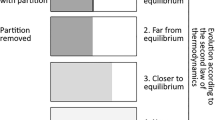Abstract
Many of the laws of physics are expressions that define probability distributions. These laws may be derived through variation of appropriate Lagrangians. We compare and contrast three Lagrangian approaches which are based on information-theoretic considerations: the Maximum Entropy (ME) principle, the Minimum Fisher Information (MFI) approach and the principle of Extreme Physical Information (EPI). (The latter also produces independent solutions by zeroing as well as varying the Lagrangian.) Though superficially similar, these three methods are markedly different in their world views and applicability to physics. Only the EPI principle applies broadly to all of physics, and we show that this is reasonable on the following grounds: Physics should not, depend upon arbitrary subjective choices, but ME and MFI, both intrinsically Bayesian approaches, reqiure the choice of arbitrary, subjectively defined inputs, such as prior probability laws and input constraints, for their implementation. EPI, in contrast, solves for its effective constraints, needs no prior distribution assumption and, hence, does not require any arbitrary subjective inputs.
Similar content being viewed by others
REFERENCES
E. T. Jaynes, Phys. Rev. 106, 620 (1957); 108, 171 (1957).
B. R. Frieden, Am. J. Phys. 57, 1004 (1989).
B. R. Frieden and B. H. Soffer, Phys. Rev. E 52, 2274 (1995).
B. R. Frieden, Physics from Fisher Information (Cambridge University Press, Cambridge, 1998).
B. R. Frieden, in Maximum-Entropy and Bayesian Methods in Inverse Problems, C. R. Smith and W. T. Grandy, eds. (Reidel, Dordrecht, 1985).
A. Papoulis, Probability, Random Variables and Stochastic Processes (McGraw-Hill, New York, 1965).
B. R. Frieden, Probability, Statistical Optics and Data Testing, 2nd ed. (Springer, Berlin, 1991).
C. Tsallis, J. Stat. Phys. 52, 479 (1988).
S. Amari, in Differential-Geometrical Methods in Statistics (Lecture Notes in Statistics 28), D. Brillinger, ed. (Springer, Berlin, 1985), p. 88.
R. Kikuchi, B. H. Soffer, J. Opt. Soc. A 67, 1656 (1977).
B. R. Frieden, J. Mod. Optics 35, 1297 (1988).
A. R. Plastino and A. Plastino, Phys. Rev. E 54, 4423 (1996).
H. L. Van Trees, Detection, Estimation and Modulation Theory, Part I (Wiley, New York, 1968).
Author information
Authors and Affiliations
Rights and permissions
About this article
Cite this article
Frieden, B.R., Soffer, B.H. A CRITICAL COMPARISON OF THREE INFORMATION-BASED APPROACHES TO PHYSICS. Found Phys Lett 13, 89–96 (2000). https://doi.org/10.1023/A:1007725804670
Published:
Issue Date:
DOI: https://doi.org/10.1023/A:1007725804670




